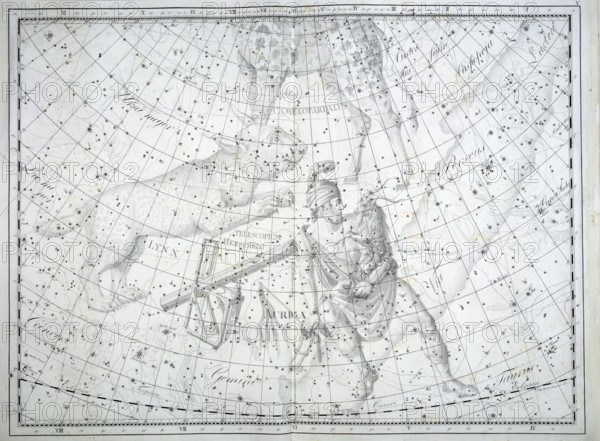
Légende
The constellation Auriga, 1801. Auriga is depicted as a charioteer and holding a small goat, Capella. To the left is the constellation Lynx. Although depicted as an animal, it is not named after one; but after the astronomer Hevelius who invented it, because he said that anyone who wanted to study the stars needed good eyes like a lynx. On the right is the faint outline of the constellation Perseus. From "Uranographia" by Johann Bode. In order to catalogue the stars that lay outside of constellations he suggested creating constellation boundaries. As a result of this the sky started to be defined into specific regions.
Date
1801
Crédit
Photo12/Heritage Images/Heritage Art
Notre référence
HRM25A15_392
Model release
NA
Property release
NA
Licence
Droits gérés
Format disponible
50,4Mo (3,2Mo) / 41,4cm x 30,5cm / 4890 x 3602 (300dpi)